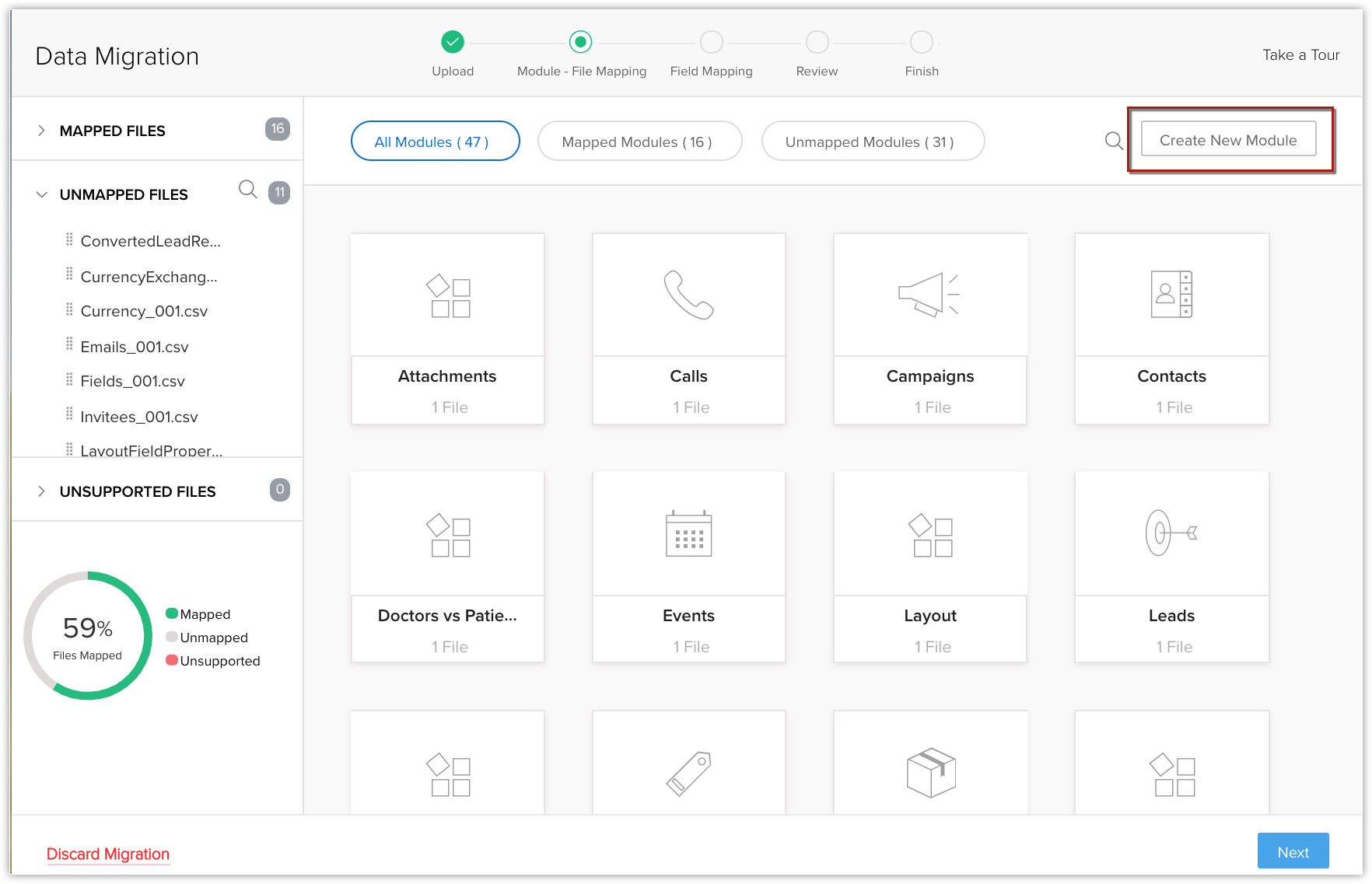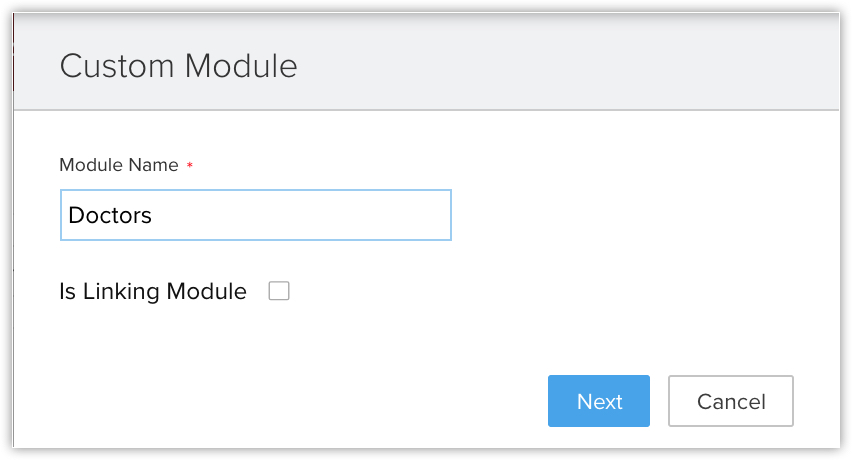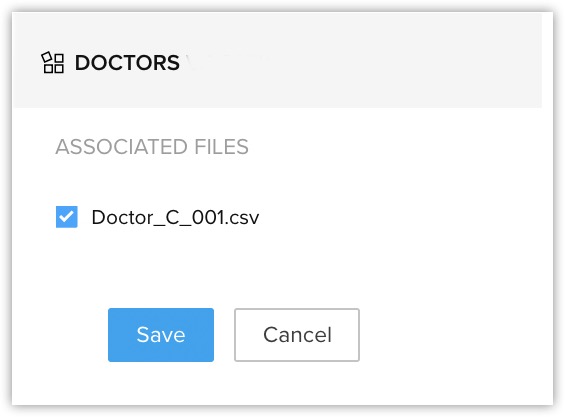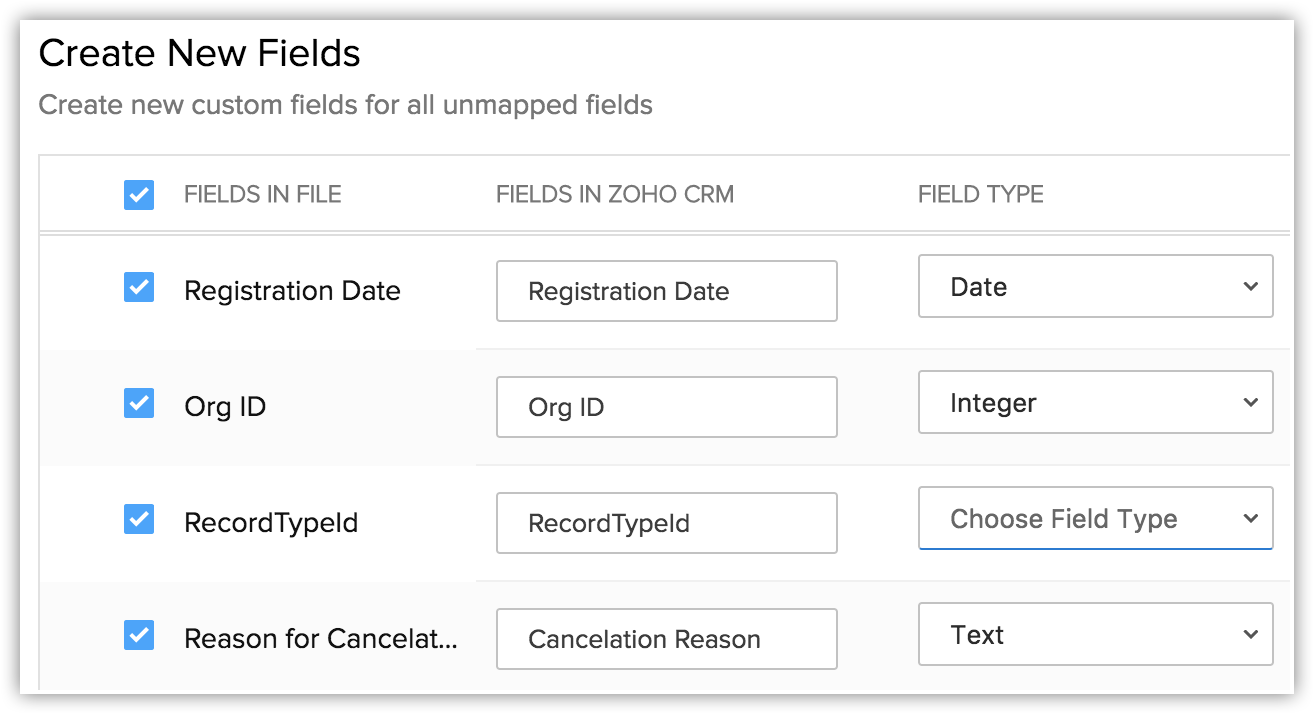Migrating Data from Salesforce
Migrating Data from Salesforce
Follow the steps in this document to migrate your Salesforce data into the CRM.
Data files from Salesforce
The zip file you upload should contain all the files in CSV format and a folder named Attachments. This folder contains the source files used as attachments in Salesforce records. One of the CSV files will list the record of attachment mappings. This will be used to retain the records' association with the attachment files.
Data from any custom modules that you created in Salesforce will be stored in files with a "_c" suffix on the file name. (e.g., registrations_c.csv).
All your data should be in the format described above. When you save the data backup to your local drive, it is a good idea to extract the files to check that the format matches and compress them again for import. This may sometimes create additional folders. If there are any additional folders in the zip file, uploading your file may fail. The data backup from Salesforce will have additional folders named Attachments, Documents and Content Version. These folders will not cause the migration to fail.
Modules Mapping
You can migrate the following supported modules to the CRM from Salesforce account:
|
|
Migrate data
To migrate data
- Log in to the CRM with ]an account which has Administrator privileges.
- Go to Setup > Data Administration > Import.
- In the Data Migration page, choose Salesforce.
- In the pop-up, browse for and upload the files.
You can select multiple files or upload a zip file to migrate data into more than one module. - Click Next.
The CRM automatically reads the files and maps the data to the correct modules and fields. - You can do the following in theModule-File Mappingsection:
- View the mapped and unmapped modules separately.
- Click on a file and see which module it is mapped to.

- View the mapped, unmapped and unsupported files separately.
- Click the Discard Migration link to start again.
- Click on a module to view the files that have been mapped to it.You can also select from the Unmapped files and map them. Multiple files can be mapped at the same time.You can also create a new module and map the appropriate file.To create a new module, do the following:
- Click Create New Module.

- Enter the module name and click Next.

- Select the file to be mapped with this module and click Save.

- Click Create New Module.
- Click Next.
The mapped modules will be listed where you can map the fields for each module. - In the Map Fields section, make sure that you map all the mandatory fields.
The field names that you specified in the CSV file will be available in the drop down lists.
- Click Create Custom Fields to add new fields and insert data for them during the migration.
The number of fields that you can create depends on your the CRM edition. (Skip to step 12 if you do not want to create fields.) - In theCreate Custom Fields pop-up, do the following:
- Modify the field labels, if required.
All the fields from the import file that were not mapped for migration because they are not available in the CRM will be listed with their column numbers from the import file.
- Select the Field Type from the drop-down list.
Autonumber and Formula are not available. You cannot create these fields during migration. - Click Create.
The field will be created and mapped to the columns in the import file. - Click Close to continue the migration process.
- Modify the field labels, if required.
- Click Save and Next.
- In the Review page, check the Field Mapping Status and the Pre Migration Statusfor Each Module.

- Click Start Migration to initiate data migration.
You can still click Edit Mapping and re-run Migration while the migration is running.

- Tags can be migrated from your file into CRM.
- If a record has more than 10 tags, only the first ten tags will be migrated.
- Each tag can have a maximum of 25 characters.
- Then data migration will be paused if more than 5000 records in a module are skipped during the migration. You will have the option to discard the migration or continue. The CRM will also inform you for each module if more than 5,000 records are skipped.
- You can undo the data migration from Import History.
Check for Data Accuracy
After importing each file, check that the data is imported correctly. For example, after importing users to the CRM, go to Setup> Users & Permissions > Users to check that all the users have been imported. Follow the same steps for Leads, Accounts, Contacts, etc. If the data is not imported properly or the fields were incorrectly mapped, you can delete the imported records and reimport.
If you have any issues with the above steps, or if you would like us to migrate your data for you, please contact us at support@constructionbos.com and one of our representatives will respond, and gladly assist you.
Related Articles
Data Migration - An Introduction
Data Migration - An Introduction Migrate Options Before you migrate Migration checklist The Data Migration wizard in the CRM ensures that your data is migrated accurately and helps you reduce much of the manual work. It automatically maps import ...Migrating Data from Other CRMs
Migrating Data from Other CRMs Data files from ConstructionBos CRM or any other CRMs Supported Modules Migrate data from ConstructionBos CRM or another CRM Migrate data from ContactManager Migrate data from Microsoft Dynamics CRM Migrate data from ...Data Privacy
Data Privacy View Data Source View Personal Fields Manage Data Processing Bases A record's details are available in two sections - Info and Timeline. When you switch on GDPR Compliance in your CRM account, you will be able to view another section, ...Importing Data to the CRM
Importing Data to the CRM Import Checklist Import Limits Import Data to a Module Import Notes Data can be gathered through various sources such as, purchasing a record database, collecting from trade shows and campaigns, and so on. Importing records ...Data Administration - An Overview
Data Administration - An Overview The purpose of the CRM data administration tools are to guide the CRM Administrator in creating, verifying and ensuring data integrity by maintaining relationships and implementing access controls throughout the ...